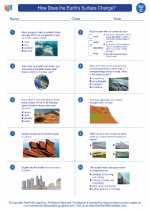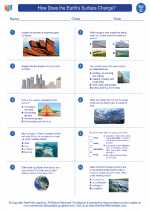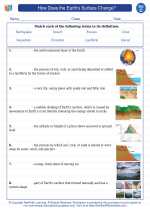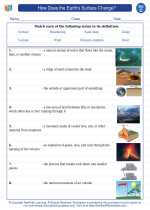What is Weathering?
Weathering is the process by which rocks and minerals on the Earth's surface are broken down into smaller pieces. This can happen through a variety of physical, chemical, and biological processes.
Types of Weathering
There are two main types of weathering: mechanical (or physical) weathering and chemical weathering.
Mechanical Weathering
Mechanical weathering occurs when rocks are broken down into smaller pieces without any change in their chemical composition. This can happen through processes such as frost wedging, where water seeps into cracks in rocks and freezes, causing the rock to break apart.
Chemical Weathering
Chemical weathering occurs when the minerals in rocks are broken down or altered through chemical processes. This can happen through reactions with water, oxygen, or other substances in the environment.
Factors Affecting Weathering
Several factors can affect the rate and extent of weathering, including:
- Climate: Weathering tends to occur more rapidly in areas with high temperatures and lots of moisture.
- Rock Type: Some types of rocks are more resistant to weathering than others. For example, granite is more resistant than limestone.
- Vegetation: Plant roots can contribute to mechanical weathering by growing into cracks in rocks and breaking them apart.
- Human Activity: Activities such as mining and construction can accelerate the weathering of rocks.
Effects of Weathering
Weathering plays a key role in shaping the Earth's surface. It can lead to the formation of soil, the erosion of landscapes, and the creation of landforms such as caves and arches.
Study Guide
Here are some key points to remember about weathering:
- What is weathering?
- What are the two main types of weathering?
- Give examples of mechanical weathering processes.
- Give examples of chemical weathering processes.
- What factors can affect the rate and extent of weathering?
- What are some effects of weathering on the Earth's surface?
Understanding weathering is important for understanding how the Earth's surface changes over time. It also has practical implications for fields such as geology, agriculture, and construction.
.◂Science Worksheets and Study Guides Third Grade. How Does the Earth's Surface Change?

 Worksheet/Answer key
Worksheet/Answer key
 Vocabulary/Answer key
Vocabulary/Answer key
 Vocabulary/Answer key
Vocabulary/Answer key
 Vocabulary/Answer key
Vocabulary/Answer key
